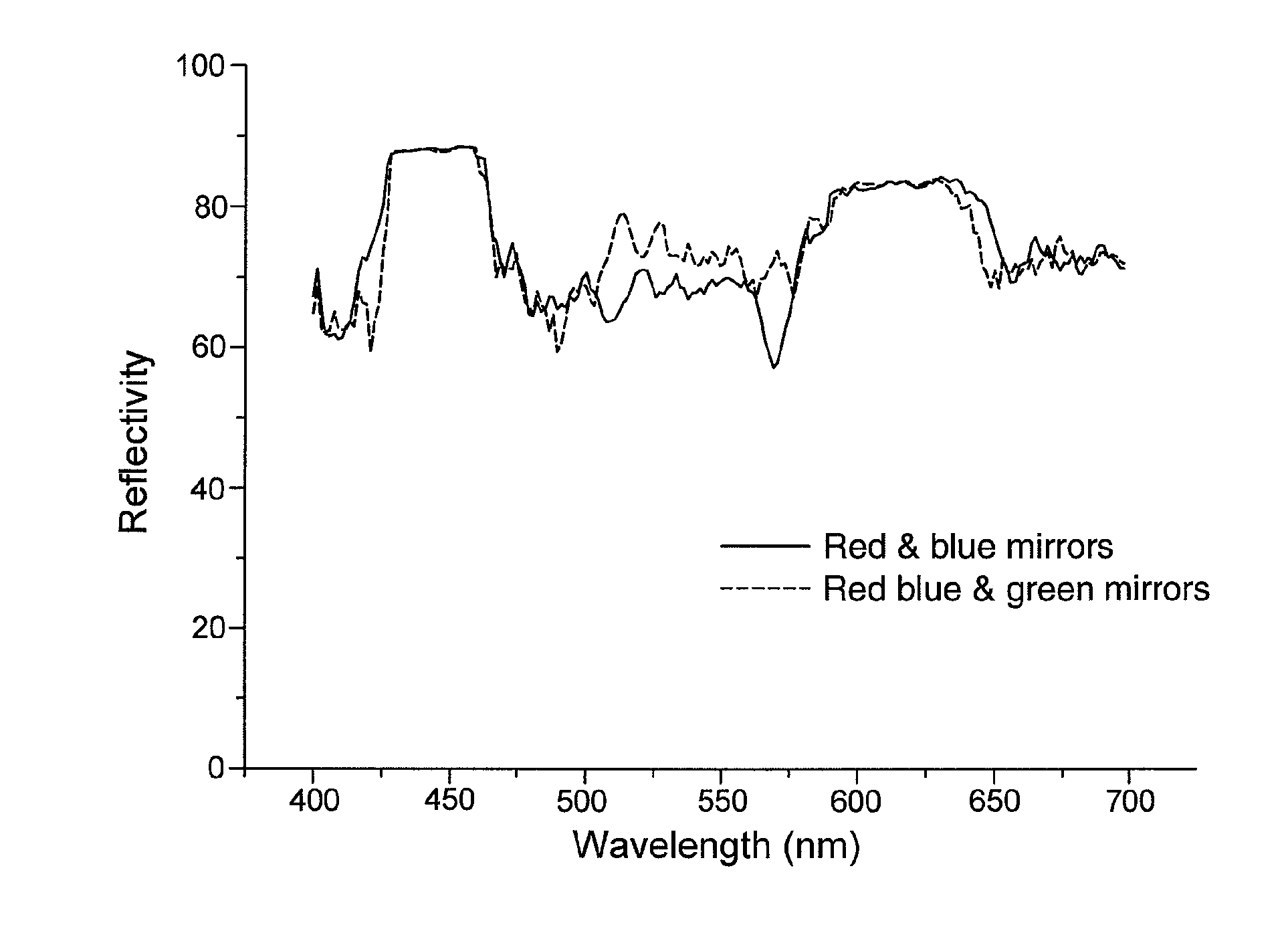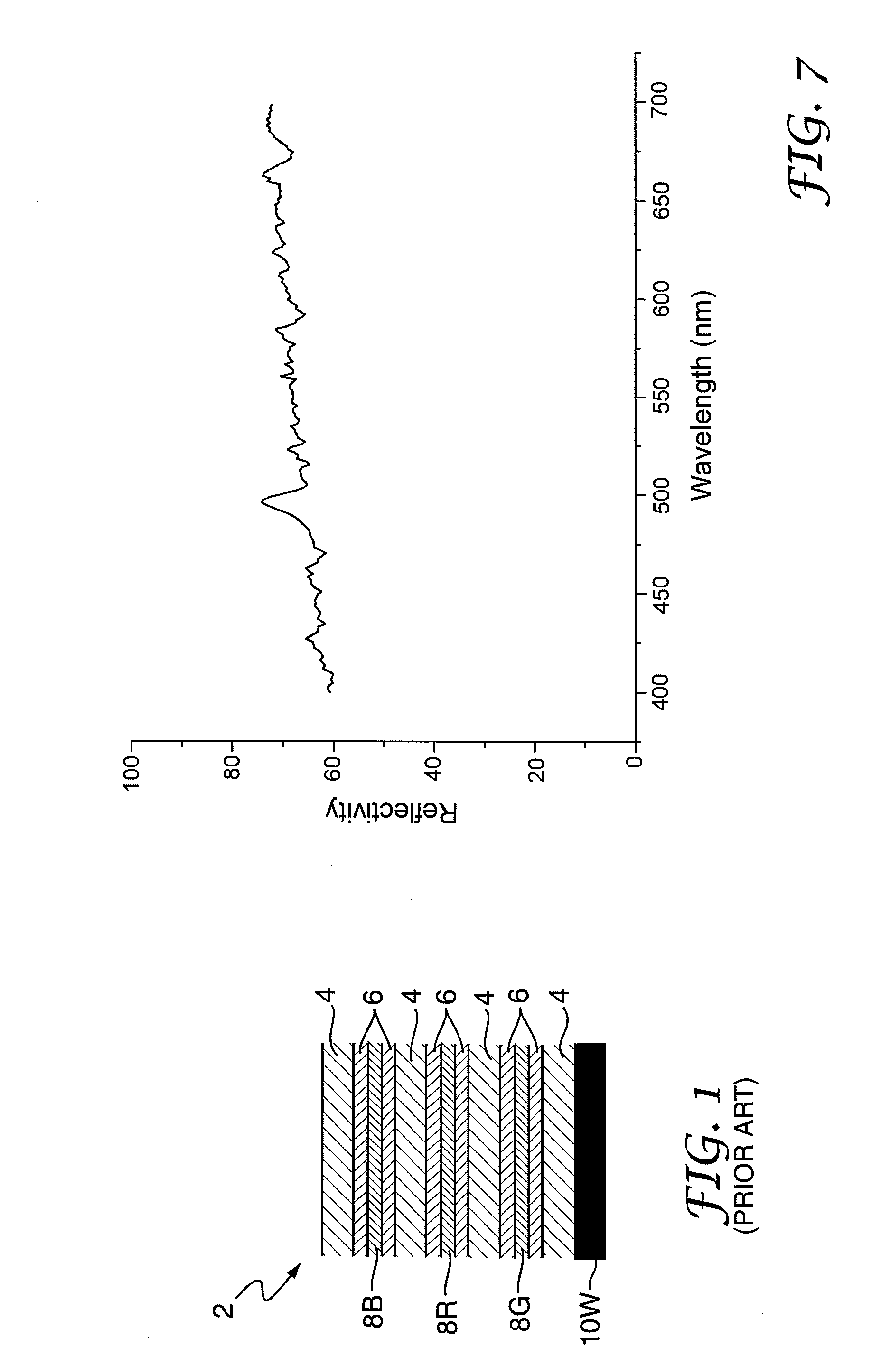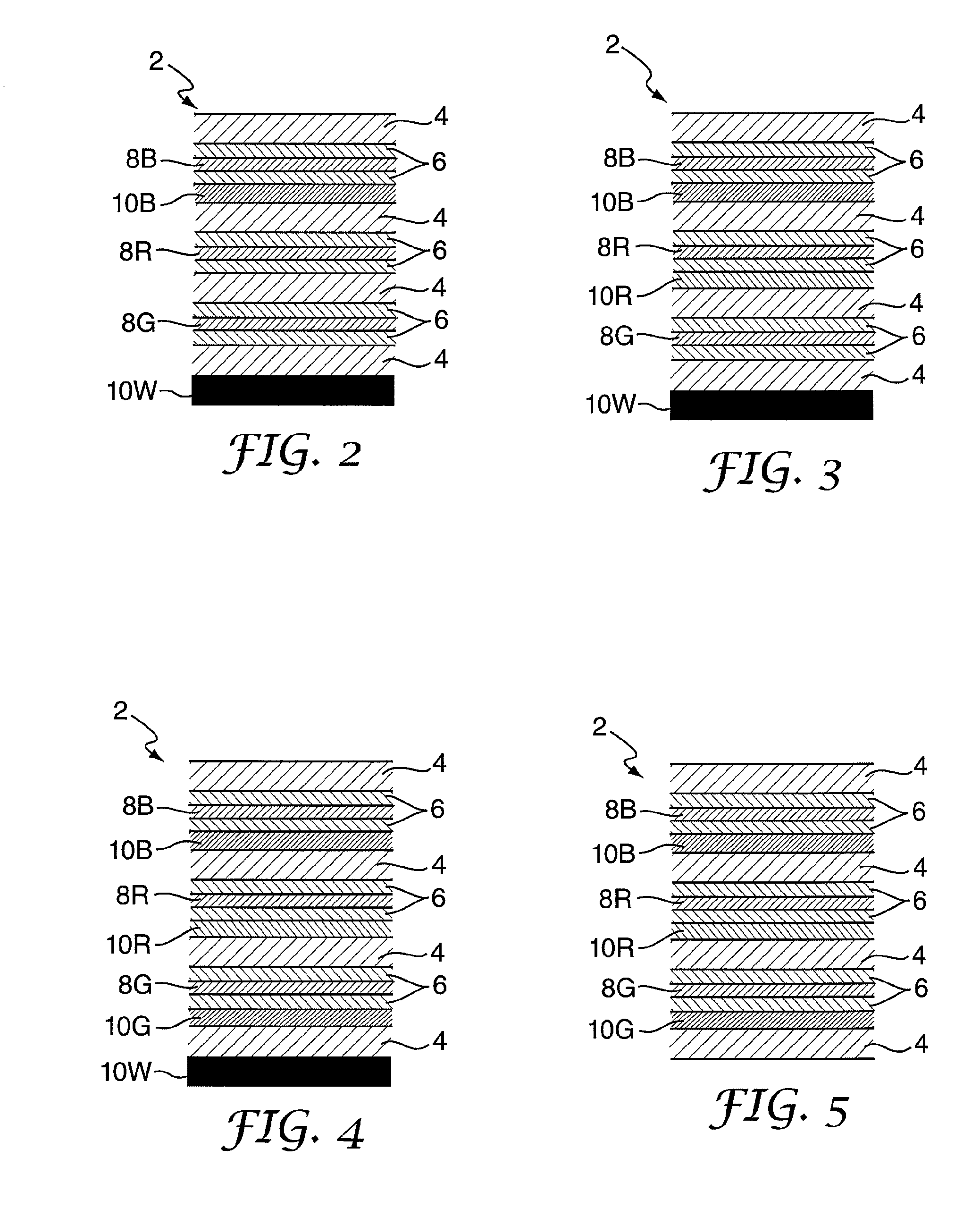Reflective Display
a display and display technology, applied in the field of reflection display, can solve the problems of increased problems, unwanted absorption by those layers, and reduce efficiency, and achieve the effect of easy production
- Summary
- Abstract
- Description
- Claims
- Application Information
AI Technical Summary
Benefits of technology
Problems solved by technology
Method used
Image
Examples
Embodiment Construction
[0023]The prior art reflective display device 2 shown in FIG. 1 comprises a stack of selective absorption layers 8B, 8R and 8G, in this example liquid crystal layers 8, which can be made to absorb, respectively, blue, red and green light. The blue-absorbing layer 8B is at the top of the stack and the green-absorbing layer 8G is at the bottom of the stack.
[0024]Each absorption layer 8 is sandwiched between transparent substrates 4 and transparent conductors 6 and can be wholly or partly actuated by the application of suitable electric signals via the conductors 6. Thus selected pixel regions of each absorption layer 8 may be made either to absorb light in a particular wavelength band or substantially to transmit all incident light. A silver mirror 10W functions as a broadband reflector which reflects light of all wavelengths. The silver mirror 10W, is disposed at the bottom of the device 2 and reflects light back through the layers 4,6,8 to the viewer.
[0025]The light passes 12 times ...
PUM
 Login to View More
Login to View More Abstract
Description
Claims
Application Information
 Login to View More
Login to View More - R&D
- Intellectual Property
- Life Sciences
- Materials
- Tech Scout
- Unparalleled Data Quality
- Higher Quality Content
- 60% Fewer Hallucinations
Browse by: Latest US Patents, China's latest patents, Technical Efficacy Thesaurus, Application Domain, Technology Topic, Popular Technical Reports.
© 2025 PatSnap. All rights reserved.Legal|Privacy policy|Modern Slavery Act Transparency Statement|Sitemap|About US| Contact US: help@patsnap.com



